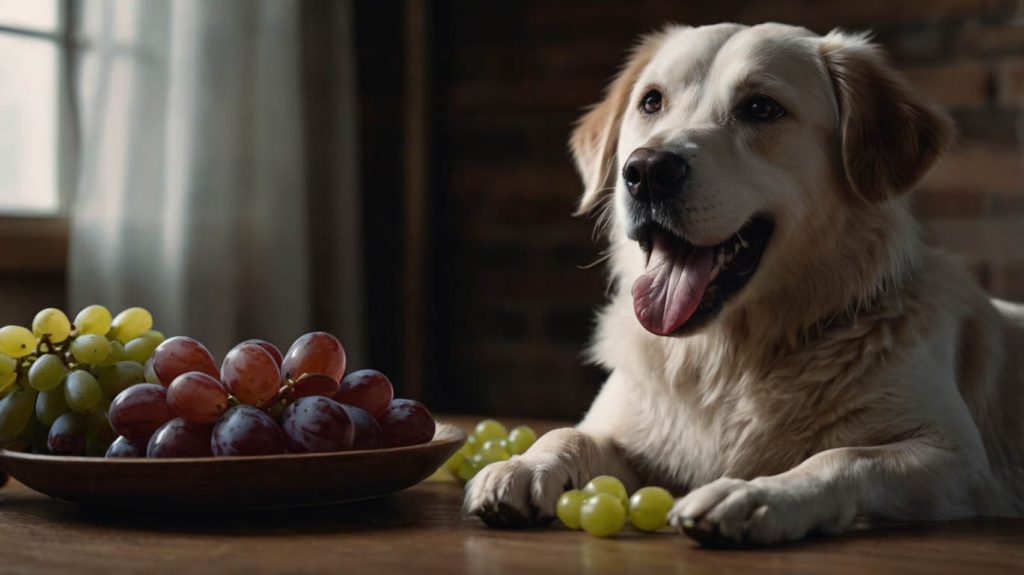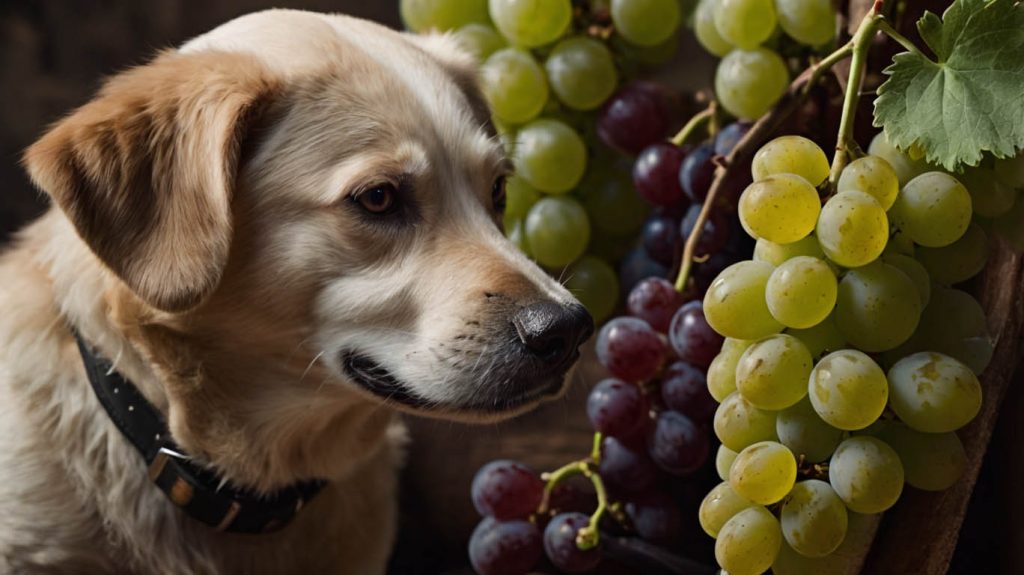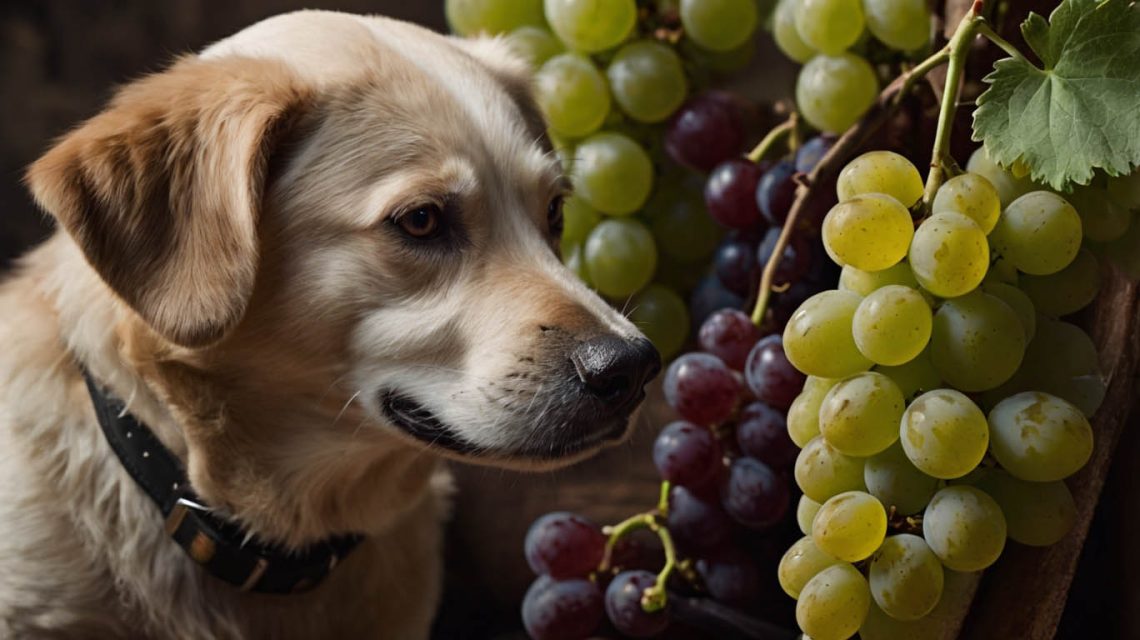Are Grapes Bad for Dogs? The Unmistakable Truth and What to Do Next
It’s a scenario that plays out in kitchens everywhere: you’re preparing a fruit salad, a single grape rolls off the counter, and in a flash, your dog has snatched it up. Your heart drops, and an urgent question floods your mind: “are grapes bad for dogs?” In that moment of panic, you need a clear, direct, and trustworthy answer, because your dog’s health could be on the line.
This guide will provide that definitive answer and walk you through the complete story of this dangerous toxicity. First, we will establish the undisputed facts about grapes and their effect on canines. Then, we will explore the science behind the danger and the critical symptoms to watch for. Finally, we will provide a step-by-step emergency action plan. Consequently, you will be fully prepared to protect your dog and act with confidence should an accident occur.
The Direct Answer: Are Grapes Bad for Dogs?
Let’s eliminate all doubt immediately: Yes, grapes are extremely bad for dogs.
This warning applies to all varieties of grapes—green, red, purple, and seedless. Furthermore, it extends to all grape products, including raisins, currants, and products containing grape juice. The toxicity is severe and can lead to sudden, acute kidney failure. Therefore, the unwavering consensus in the veterinary community is that there is no safe quantity of grapes or raisins for a dog. The answer to “are grapes bad for dogs” is always a resounding and absolute yes.

The “Why”: The Science Behind Why Grapes Are Bad for Dogs
For years, the exact toxic agent in grapes was a mystery, which made the situation even more frightening. However, veterinarians and toxicologists have now identified the likely culprit: tartaric acid.
- The Tartaric Acid Factor: Grapes and raisins contain high concentrations of tartaric acid. While this is harmless to humans, dogs have a unique sensitivity to it. The concentration of this acid can vary significantly from grape to grape, which explains the unpredictable nature of the toxicity. This is the core reason why grapes are bad for dogs.
- The Primary Danger: Acute Kidney Failure: Ingesting tartaric acid can cause rapid and severe damage to a dog’s kidneys, leading to acute renal failure. This is a medical emergency where the kidneys abruptly stop functioning, and it can be fatal if not treated immediately and aggressively.
How Many Grapes Are Bad for Dogs? The Unpredictable Risk
This is the question every worried owner asks, but there is no safe answer.
- No Known Safe Dose: There is no scientifically established toxic dose. One dog might eat several grapes and show no outward signs, while another dog of the same size could eat a single grape and suffer complete kidney failure.
- The Only Safe Approach: Because we can’t predict an individual dog’s sensitivity, you must treat any ingestion of grapes or raisins as a potential poisoning. The risk of waiting to see what happens is far too great.
What to Watch For: The Symptoms of Grape Poisoning
If you suspect your dog has eaten grapes, you must be vigilant for the following signs. Symptoms typically begin to appear within 6 to 12 hours of ingestion.
Early Warning Signs (Within the First 24 Hours)
These are the initial signs that the toxin is affecting your dog’s system.
- Vomiting and/or Diarrhea: This is usually the first and most common symptom.
- Lethargy and Weakness: Your dog may seem unusually tired, sluggish, or depressed.
- Loss of Appetite: A sudden refusal to eat is a significant warning sign.
- Dehydration: Check for a dry nose or sticky gums.
Severe Signs of Kidney Failure (24-48 Hours)
As the condition progresses, the signs become more severe and indicate kidney damage.
- Abdominal Pain: Their stomach area may be tender when you touch it.
- Changes in Urination: You might notice an initial increase in thirst and urination, which is often followed by a drastic decrease or a complete stop in urination (anuria). A lack of urination is a grave sign.
Emergency Action Plan: What to Do if Your Dog Eats Grapes
If you know or even suspect your dog has consumed a grape, time is your most critical asset. Do not wait for symptoms to appear.
Step 1: Contact a Professional Immediately
This is your first and most important action. Call one of these resources right away:
- Your Veterinarian or the Nearest 24/7 Emergency Animal Hospital.
- The ASPCA Animal Poison Control Center: (888) 426-4435 (A consultation fee may apply, but it is worth it.)
- The Pet Poison Helpline: (855) 764-7661 (A consultation fee may apply.)
These experts can provide immediate, life-saving advice based on your dog’s size, the amount ingested, and the time that has passed.
Step 2: Do NOT Induce Vomiting Unless Specifically Instructed
While your vet may want your dog to vomit (a process called decontamination), you should never attempt this at home without direct professional guidance. Using the wrong substance or an incorrect dose of hydrogen peroxide can cause serious harm.

What to Expect at the Vet When Grapes Are Bad for Dogs
When you arrive at the clinic, the veterinary team will act quickly.
- Decontamination: They will likely induce vomiting and administer activated charcoal, which helps bind to any remaining toxins in the digestive tract.
- Aggressive IV Fluids: They will place an IV catheter and begin administering intravenous fluids. This is done to “flush” the kidneys (a process called diuresis) and protect them from further damage.
- Monitoring Bloodwork: Your dog will need to be hospitalized for 2-3 days so the team can monitor their kidney function through repeated blood tests.
Prevention: The Best Way to Handle the Fact That Grapes Are Bad for Dogs
- Secure Storage: Keep all grapes, raisins, and currants stored in the refrigerator or in high cupboards, well out of your dog’s reach.
- Beware of Hidden Grapes: Be vigilant about foods that can contain raisins, such as trail mix, granola, baked goods like scones and fruitcake, and some salads. For a more complete list of dangerous foods, explore our internal guide on [Human Foods That Are Toxic to Dogs].
- Educate Everyone: Make sure all family members, including children, and any houseguests understand the serious danger these fruits pose.
Conclusion: A Clear Answer for Your Dog’s Safety
The question, “are grapes bad for dogs?” has an unequivocal and serious answer. These common fruits represent a significant and unpredictable danger to our canine friends. By understanding the risk, recognizing the symptoms, and having a clear emergency plan, you are in the best possible position to protect your pet. Immediate veterinary intervention is the key to a positive outcome, so never hesitate to make that call.


